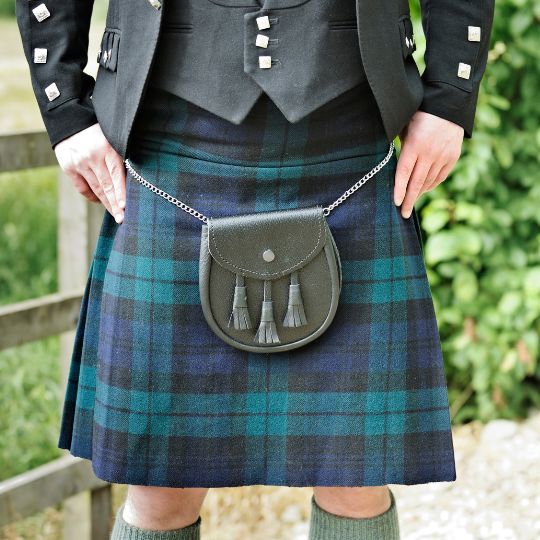The Kilt Dilemma: To
Underwear or Not to Underwear?
/08
by Jennifer
Cram - Brisbane Marriage Celebrant © 01/02/2024Categories: | Scottish Wedding | Wedding Attire |
 There
are few guarantees about weddings, but one thing I
can absolutely guarantee as a celebrant who
regularly officiates weddings in the Scottish
tradition, is that, if you're wearing a kilt, you'll
not only look fabulous, you'll also be wearing a
sure-fire conversation starter. So you should be
prepared with a witty comeback ready to stop anyone
who asks what's under your kilt in their tracks.
There
are few guarantees about weddings, but one thing I
can absolutely guarantee as a celebrant who
regularly officiates weddings in the Scottish
tradition, is that, if you're wearing a kilt, you'll
not only look fabulous, you'll also be wearing a
sure-fire conversation starter. So you should be
prepared with a witty comeback ready to stop anyone
who asks what's under your kilt in their tracks.As the saying goes "A true Scotsman doesn't wear underwear". But like all sayings, that one needs clarification. which means delving into history. but first, should you or shouldn't you "go regimental"?
Knickers or Knackers?
Undies or Regimental?
The Scottish Official Board of Highland Dancing clearly thinks it is. It requires dancers to cover up for their events and regulations. Competitors at Highland Games are also required to wear underwear, specifically dark-colooured underwear.
However, there is always the brave, or foolhardy, soul who goes knickerless at a wedding. I know that from personal experience from one where a groom went regimental under his kilt, and without going into detail I can assure you that synchronised embarrassment reached dizzy heights that day.
Where
it all started
The popular belief (and origin of the term "going
regimental") as a hard and fast rule, comes from the
military. And it is much more recent that most would
imagine - around the time of the Boer War and
World War I.Where
it all started
As a practice, however, it goes way back, long before the invention of the modern kilt in the 18th century. To a time when neither men nor women wore the knicker type undies we take for granted. And Scottish warriors, known for their fierceness, struck terror into the heart of Roman legionaries.
Is it even
true?
A survey done nearly a decade ago, revealed that only 38% of kilt wearing Scots wore nothing under their kilt. Of the remainder, 7% wore shorts of some sort, and 55% wore underwear. Which explains both the availability and popularity of blue undies with the saltire across the behind!
What were the
benefits of wearing nothing under the
kilt?
None of the above precautions apply at a wedding!
Granted, in warmer climates like Queensland, you might be cooler without undies on hot days, but you will be providing easy access to midges and mozzies.
Good reasons
to wear underwear
Th
The
common reason for not wearing underwear with fashion
garments is to avoid visible panty lines. Not a
problem with the kilt due to both the design of the
kilt and the weight of the material used. Whether you own your own kilt, or hire one for the occasion, hygiene requires underwear. When hiring, that is a common condition. Nonetheless, most kilt hire firms have numerous hygiene horror stories to tell. And if a hire firm can't let their staff handle an unhygienic kilt without breaching health and safety rules, neither can a dry cleaner. Meaning there is only one thing to do. Dispose of it. So it is in everyone's financial interest to avoid contaminating the inside of your kilt.
An emerging reason to do everything to keep existing kilts in the supply chain, or to preserve your own is simple availability. Demand for kilts has never been higher, which has created a shortage. Both to buy and to hire. Kiltmaking is labour-intensive and it takes an experienced kiltmaker at least 20 hours to make a kilt. Beautifully handsewn kilts are garments that last a lifetime and can be passed down the generations if well cared for. Every kilt that gets taken out of the supply chain has a negative impact on availability.
Thanks for reading!

pullin0 Things